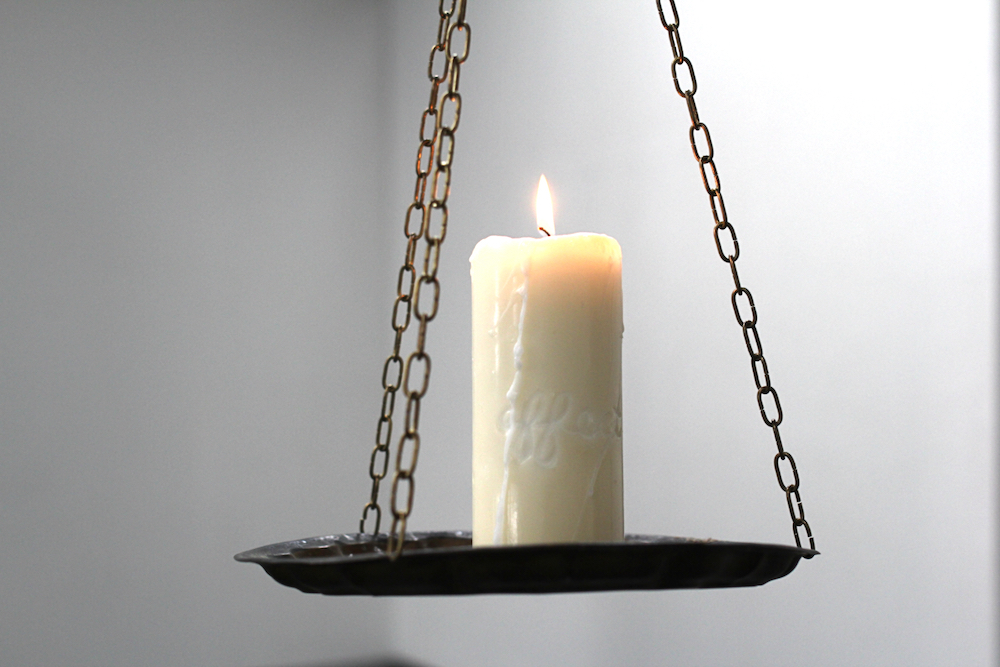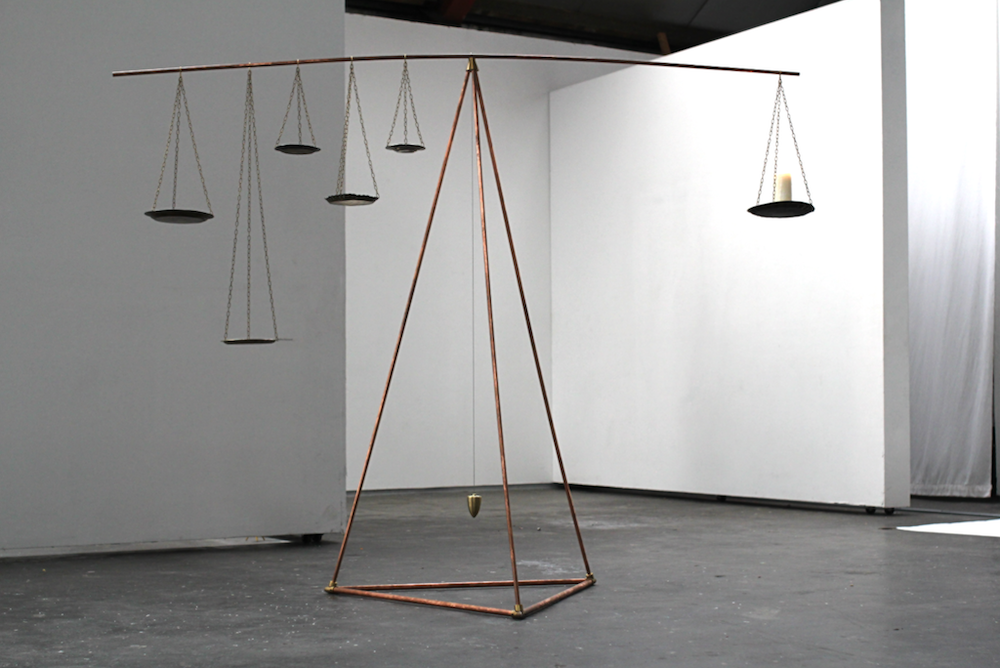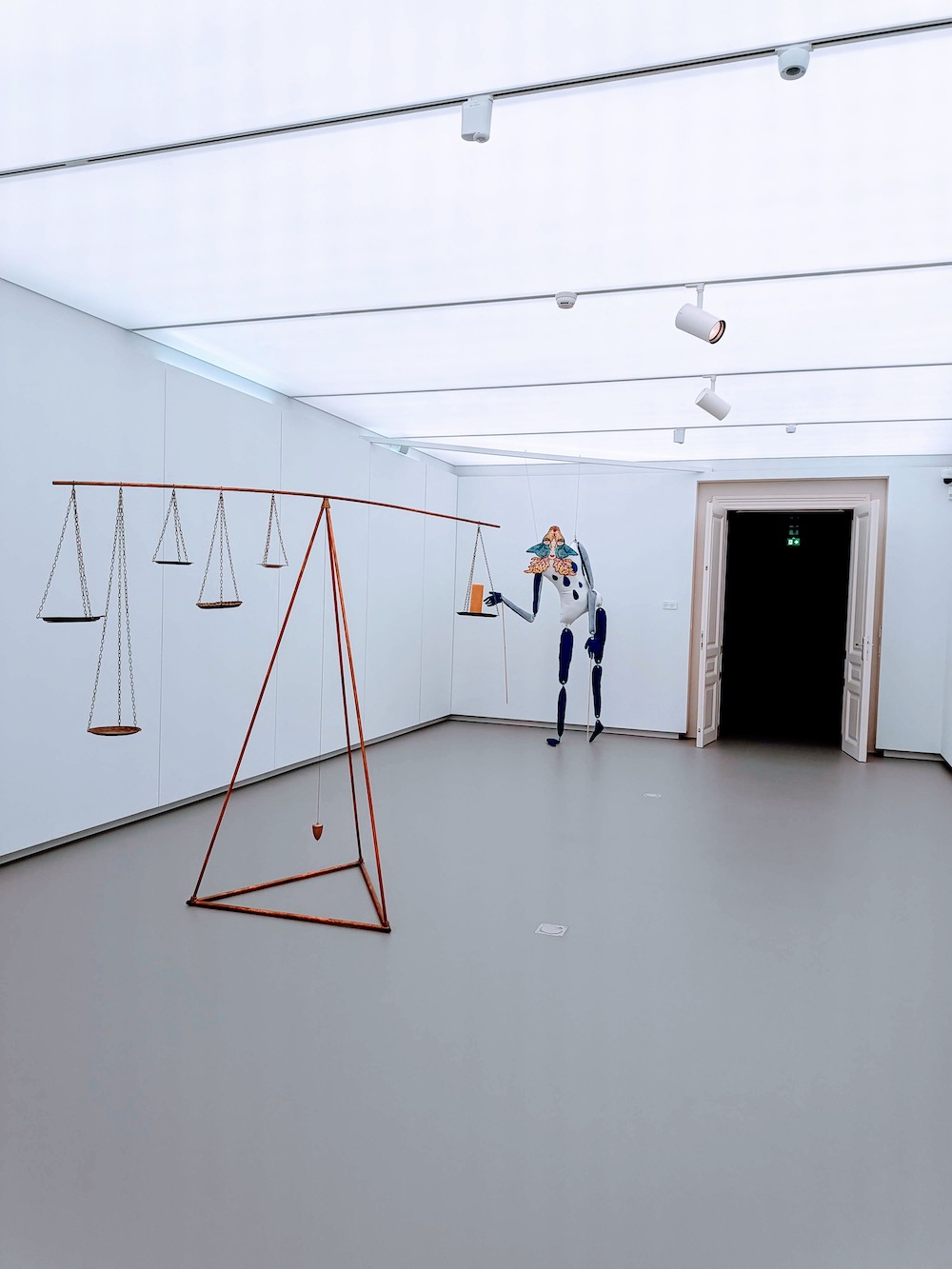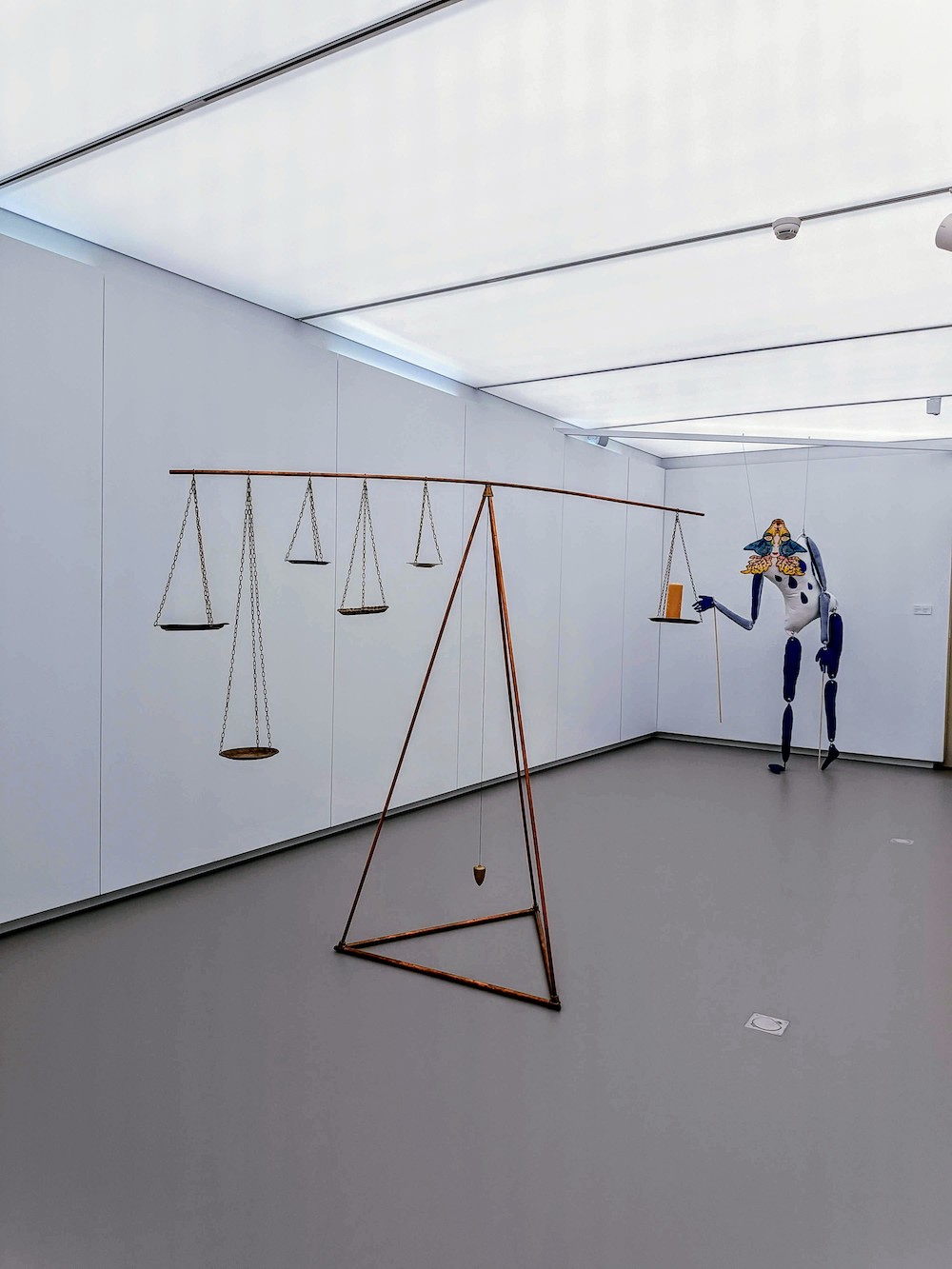Lighter than Matter, Heavier than Mind is a kinetic sculpture—a symbolic balancing act—that begins with a speculative dialogue between temporality and systems of value. The work is driven by the internal turbulence of selfhood, caught in constant negotiation with identity, time, and aspiration under the relentless conditions of a 24/7 late-capitalist reality. In this regime of perpetual motion, value is simultaneously pursued and destabilized, producing a feedback loop of desire, demand, and doubt.
The work draws on Erik Erikson’s observation that “doubt is the brother of shame,” probing the psychosocial tensions between autonomy and shame through discursive explorations of identity formation. Shame—while not biologically inherent—has long functioned as a powerful regulatory mechanism across public and private life, shaping our sense of worth through both societal frameworks and intimate self-reflection.
Lighter than Matter, Heavier than Mind examines these themes through the metaphor of scaling—measuring, weighing, and calibrating the invisible burdens of shame and the elusive coordinates of self-worth. The installation features a life-sized, triangular copper structure that functions as a precarious weighing system. Three arms extend from the skeleton, each holding a different set of weighted elements, symbolising distinct registers of shame. At the center of the structure hangs a precisely calibrated one-kilogram weight—representing selfhood—which holds the entire system in equilibrium. If this balance is disrupted, if any relational proportion becomes skewed, the installation collapses, exposing the fragility of the framework.
This sculptural mechanism metaphorically maps the delicate balance between self-worth, doubt, external expectations, and inner emotional economies. The work reflects on the instability of selfhood under the pressures of societal measurement, offering a poetic and psychoanalytically charged exploration of identity as a constantly negotiated construct.
Symbolic Components:
- Structural skeleton (tubing): Represents both societal scaffolding and internal psychological infrastructure.
- Central pendulum / plumb bob (1 kg weight): Embodies the concept of selfhood—stable, central, yet precariously dependent on external and internal balance.
- Left arm (5 plates): Associated with logical faculties—language, comprehension, control, and social expectations. It metaphorically holds the weight of cognitive and normative responsibilities.
- Right arm (1 plate with a candle): Represents the intuitive, creative, and emotional hemisphere—housing memory, imagination, and resilience in the face of temporal shifts. The candle is a symbol of fragility, light, and temporality.
The work employs psychoanalytic tropes and architectural precision to propose a conceptual landscape in which identity is not fixed but constantly recalibrated. Lighter than Matter, Heavier than Mind ultimately gestures toward the intimate and societal ecosystems we inhabit—fragile, weighted, and perpetually in motion.






